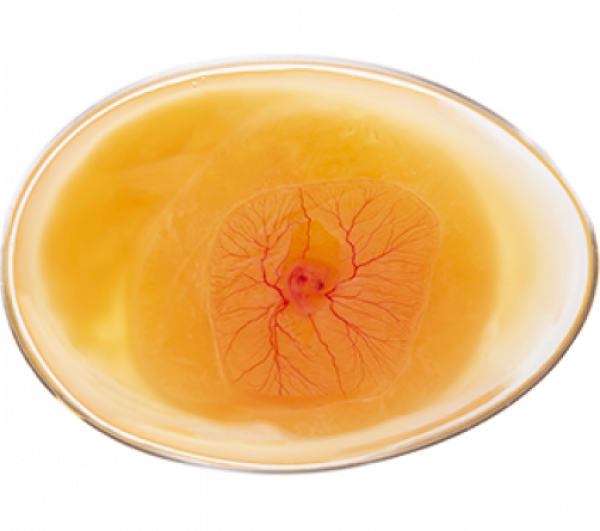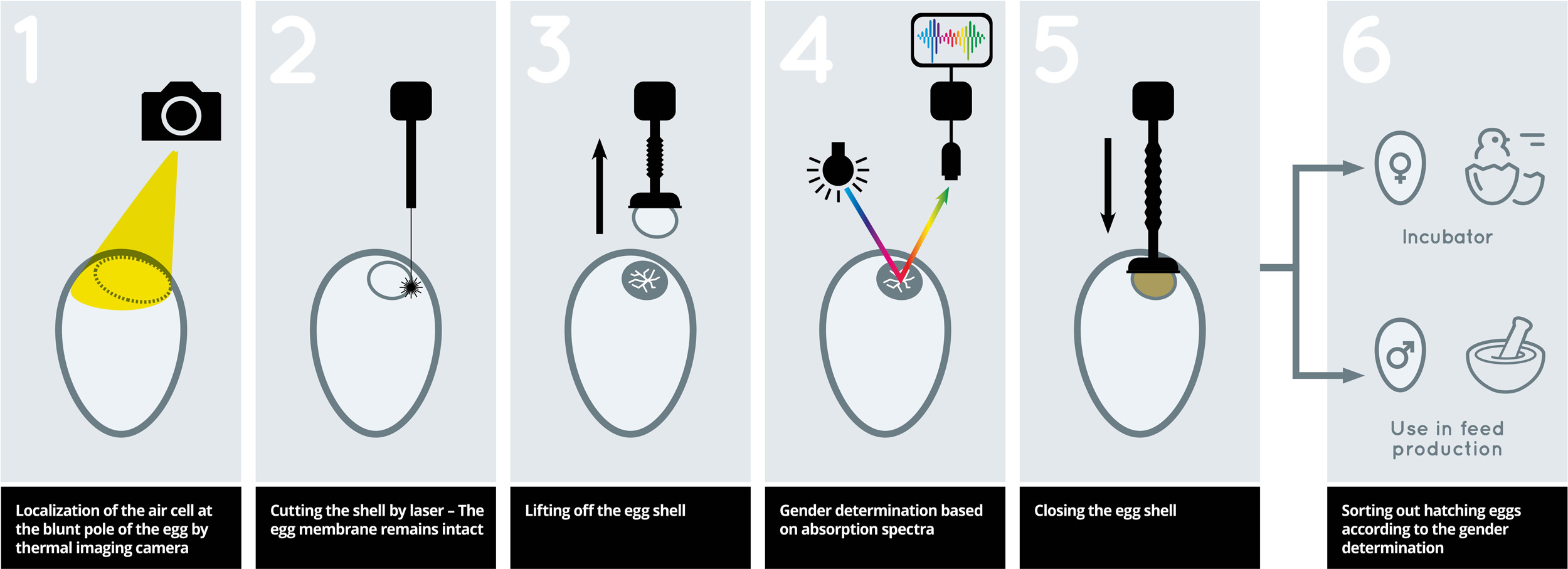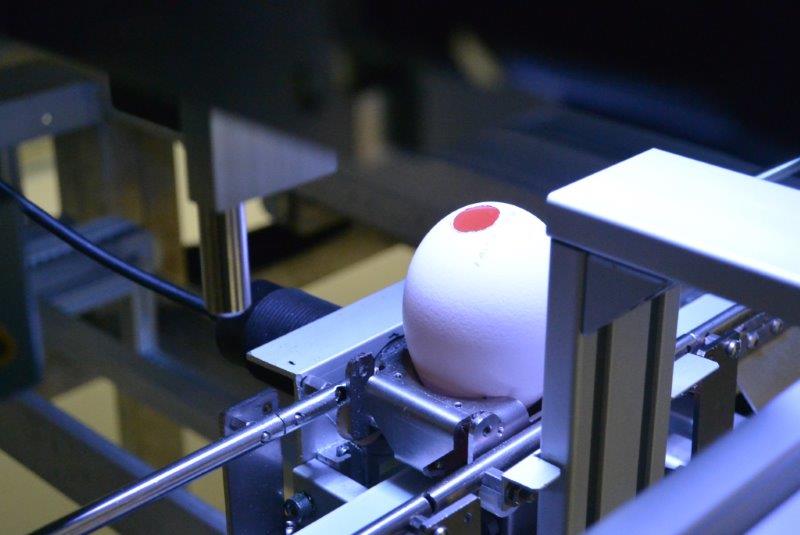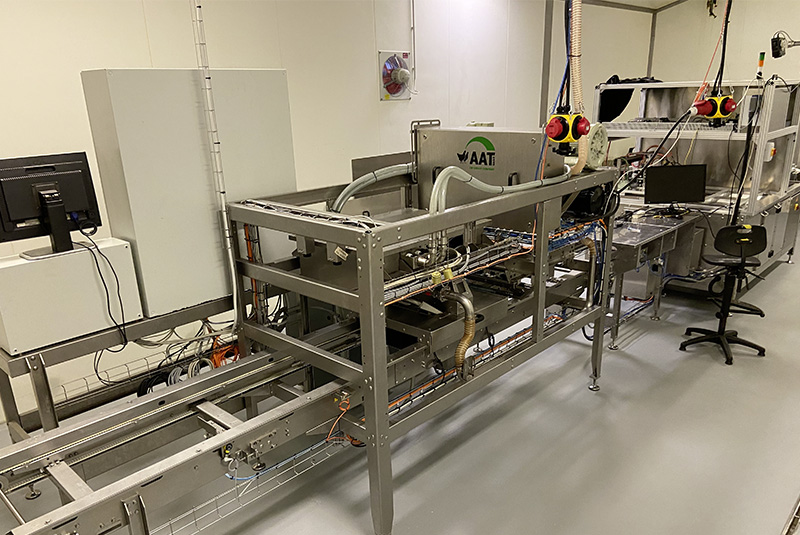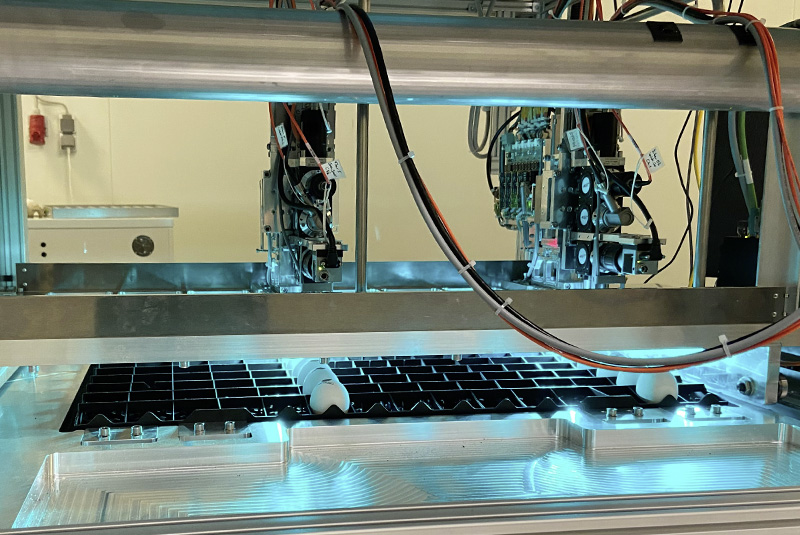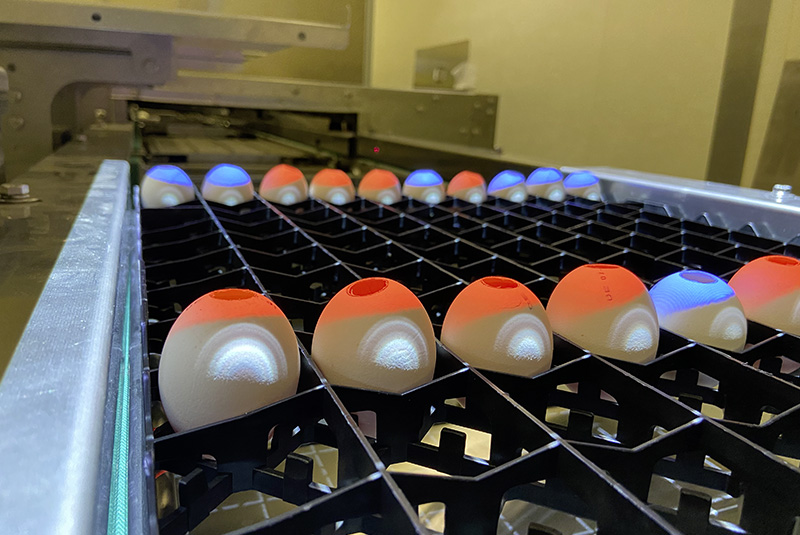ON THE FIFTH DAY OF INCUBATION
Optical measuring procedure
In the early spectroscopic method, the determination of sex is carried out with the support of an optical measuring procedure on the fifth day of incubation. First, the air cell within the egg is detected, the shell is then perforated with a CO2 laser and the lid of the shell is lifted. After the sex has been determined contactlessly, the shell is re-sealed. The eggs classified as female are incubated further and the eggs that are sorted out are processed further as a high-quality protein source.
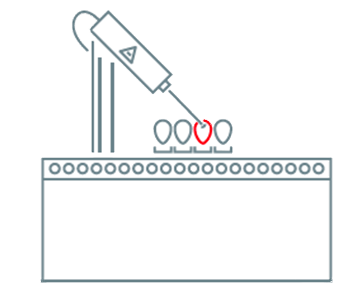
From labatory to practice
Technology transfer
The early spectroscopic method, which was developed under laboratory conditions, is still being tested. While promising results have already been achieved in the laboratory so far, the procedure must also pass the practical conditions of everyday hatchery life and, in addition to high determination accuracies, also enable good hatching rates. A concrete date for the introduction of this method cannot be given yet. Until this method is ready for practical use, our hyperspectral measurement technology we have developed under the name CHEGGY is available.
Further research
In this context, we welcome the commitment made in December 2020 by the Lower Saxony Ministry of Agriculture to fund basic research at the TU Dresden to further improve the process (see press release: Otte-Kinast: "Milestone in phasing out chick-culling"). Our role in the research project is to develop an automation for the solution approach pursued here on incubation day 5.5 that meets the high demands of a modern hatchery in terms of both measurement accuracy and throughput.
In addition, AAT and the TU Dresden agreed to cooperate closely in transferring the technology from the laboratory to the hatchery in September 2022. In order to transfer the process to industrial suitability within the framework of this project, AAT has contributed more than a million euros.
